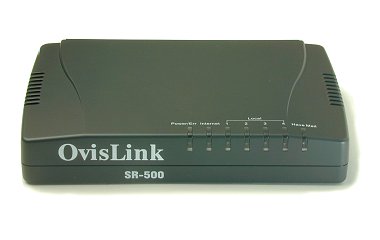Domestic SOHO devices, is it real?

Faced sometimes with the skew-handedness of Taiwanese manufacturers of SOHO devices of various kinds, be they routers or print servers, one logical question arises? How long will consumer device manufacturers shift the blame for their product failures from themselves to the user? I think that you have often come across the fact that for some reason the promised VPN does not work in your home router, and it receives DHCP by a lucky chance.
Moreover, modified versions of firmware for devices from the Open Source community are often more stable and functional than factory counterparts. You don’t have to go far for examples, these are DD-WRT , OpenWRT and many other examples .
I think it’s obvious why DLinks, TP-Links, and other “masterpieces” of engineering are so popular in our country. Not at all because of its functionality, but because it’s cheap and the price / quality ratio is better than that of competitors (mainly due to the price of course :)).
Watching how people continue to collect home routers, NAS servers and other home-made products, the question arises. Why the production of such SOHO devices, it must be said is not the most high-tech, is not established with us. In a country that has long been famous for its bright heads and engineering minds? Or is it glossy web2.0 startups with blackjack and whores overshadowed everyone's mind? In fact, we continue to consume imported products, continuing to sponsor other economies, instead of developing production in our own country.
For example, take the iron startup Myka BitTorrent (which, incidentally, has still not found venture). Virtually all of the "goodies" of this piece of iron are implemented using one single System-on-Chip BCM7403 .

This SoC has the following features:
- H.264 hardware decoding VC-1; HD MPEG-2 / SD MPEG-2; DivX 3.11 / 4.11 / 5.x; MPEG-4.
- Hardware decoding AAC LC; Dolby Digital (+), MPEG 1/2/3; Windows Media Audio
- A pair of built-in HD DACs.
- S / PDIF output.
- Support for up to two I2S audio codecs.
- Processor 300 MHz MIPS32.
- SATA interface.
- Integrated Ethernet MAC and PHY.
- Integrated USB controller.
- Support for SMART CARD.
The minimum binding + 2 audio codecs, and we have a home media center. If we add BCM4322 to this bundle , we get WiFi support.
BCM3368 , a pair of demodulators, minimum binding (DRAM, NAND Flash) and DOCSIS modem with VoIP functionality is ready.
And there are a lot of such examples. Modern SoC incorporate all the necessary functionality. The reference board design and all circuitry is provided by the chip manufacturer. The price of such chips in large batches does not exceed 10-15, occasionally 25 cu
As an example, Marvell SheevePlug's proprietary platform is fully Open Source, and all circuit boards and circuit boards are available to anyone.
Not convinced yet? Let's take a look at Time Capsule from everyone's favorite Apple:
- WiFi AP implemented on Marvell 88W8363
- SoC Marvell 88F5BF01 C500 500Mhz, based on ARM9. Includes USB, Ethernet, SATA controllers, support for a dual-channel memory controller, as well as PCI-E. Such a charm is used on most NASs.
- 16 megabytes of flash on the Spansion S29GL128N11TF101 chip.
- 2 DDR2 667 Qimonda chips with a total capacity of 128 MB.
- 5 port gigabit switch BCM5395 .
That's all the street magic :) Of course, everything is not as simple as it may turn out and also requires funding, but nothing is impossible. And the money for which mail.ru acquired smaper (about 2 million cu), and the year of work, would be quite enough to bring 2-3 products to the market.
Update: I have no purpose to argue, or to convince everyone in this thread about the advisability of placing the production / development of these devices in Russia. First of all, I myself am interested in the question of what to do so that such devices become a reality.
